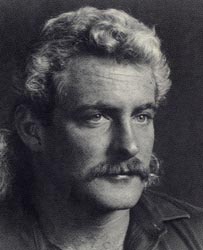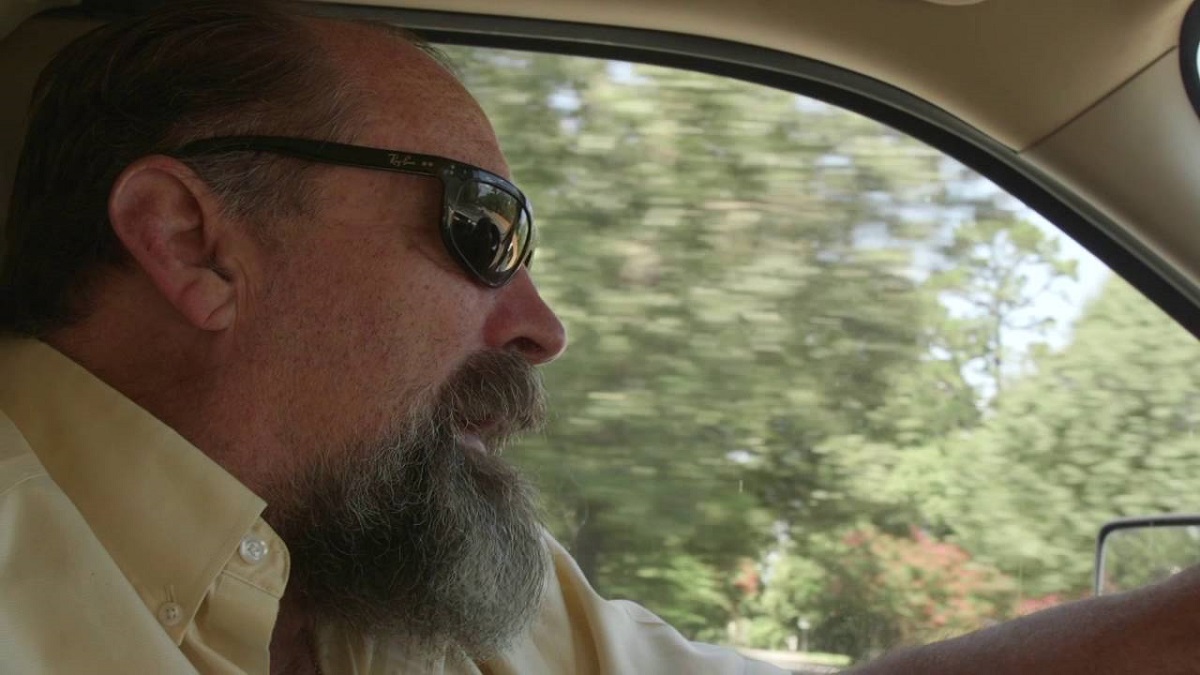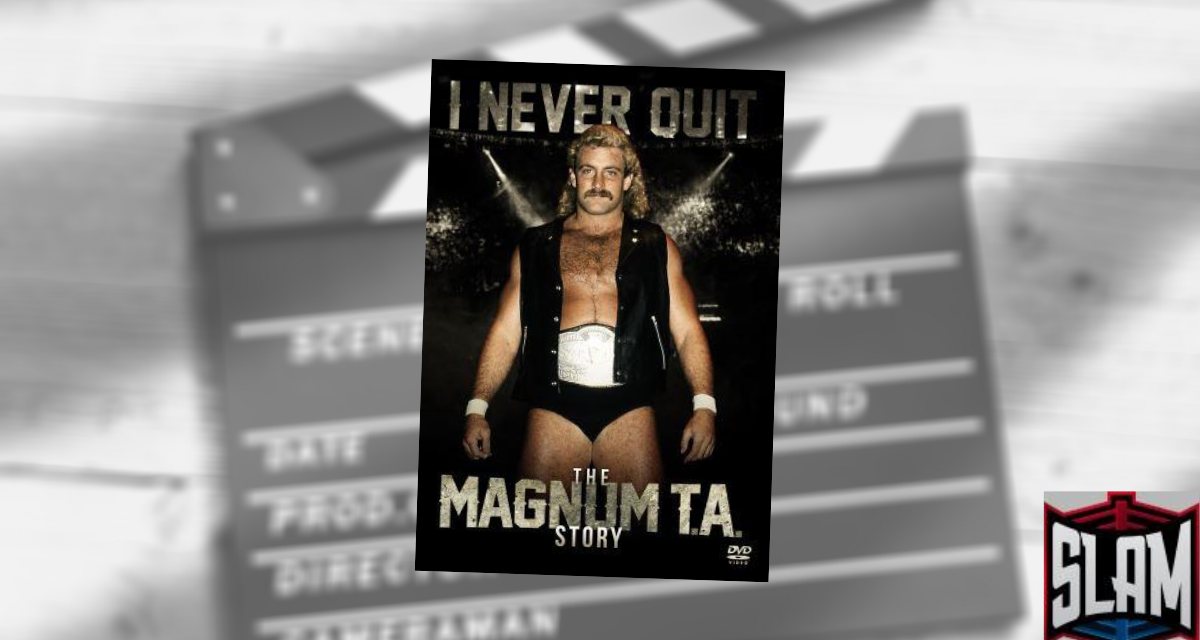Thirty years after a car crash slammed the door on Magnum TA’s in-ring wrestling career, filmmaker Michael Elliot provides an intimate look into Magnum’s life now while celebrating his place in history with many voices singing his praises. It’s a very personal and frank account, and it reminds that what is viewed as an ending in the history books is but part of Magnum’s life, and he details how it changed him, but did not defeat him.
The film is aptly titled I Never Quit: The Magnum TA Story, drawing reference to the famous “I Quit” steel cage match between Magnum and Tully Blanchard, but more fittingly to his perseverance after suffering debilitating injuries in the crash. Today, Magnum uses a Segway to get about; he looks weathered, but not exhausted. He sounds thankful and pragmatic, but not bitter.

Magnum in his wrestling prime
Much of the film is spent in close contact with Magnum, with him detailing what his life was like and what it has become. Just minutes in, we are on the street in Charlotte, and Magnum is driving. He speaks of coming home from work 30 years ago before arriving at the precise point of the crash. From there, we watch him in a contemplative state as a newscaster’s voice plays over the image, describing the unfolding of the event.
From that point, Elliot brings us clear back to Magnum’s early days; not just in the ring, but to his youth when he became a fan. His mother, Marion, speaks of his burgeoning interest in amateur wrestling through high school, and how he took to it despite a dismal first year with only one win to his credit. Magnum recalls how he sought to better himself physically to improve at the sport, and that’s when he found himself working out around “monsters” — whom he learned were professional wrestlers.
Magnum returns many times throughout the film to an appreciation of how things fell in line for him to get into the business and, once inside, to find success. He began rubbing shoulders with wrestlers such as Blackjack Mulligan, Ricky Steamboat, and many more while working security for night clubs. Eventually, this led him to a tryout in Charlotte, run by Gene Anderson, which he walked away from once he recognized that it wasn’t a serious path to find new talent but a way to humiliate hopefuls to protect the business. George South, set to cross paths with Magnum in the future in the NWA, recalls that “their sole purpose was to beat you up so you didn’t come back.”
Still, the bug had bitten Magnum, and it wasn’t long before he found another avenue in, and he provides a humble walkthrough of what was becoming an increasingly obvious path to stardom. While Magnum credits much of his success to lucky timing, noting how he would be chosen to slip into the spots of wrestlers moving on to other territories (most notably to the WWF), and being given their high-profile storylines to go with them.
Many voices, however, chime in to speak on Magnum’s behalf and how it wasn’t just good fortune that was leading to his rise. From being labelled nothing less than “The Golden Child” by Dusty Rhodes, to Nikita Koloff speaking of Magnum’s grooming to take Ric Flair’s spot as the NWA Champion as “more than a rumour, more than a forecast,” but the plan, Elliot provides chances for many esteemed commentators and wrestlers to sing Magnum’s praises. Jimmy Valiant, Tully Blanchard, Bill Apter, Ricky Morton, and more provide plenty of reminiscing a touch of “What if” dreaming about how his career may have played out.
Elliot says that he kept many contacts after completing his documentary History & Tradition: The Story of the National Wrestling Alliance, and everybody he got in touch with was eager to share their thoughts on Magnum. Still, the most compelling part of this movie is the amount of time that Magnum has to tell his own story.

Magnum in one of many scenes recounting his past, with an eye on the future
At about an hour into the film, we come full circle back to October 14, 1986, and we see the newscast that we had only heard earlier. This time, we are presented with images of the smashed car. Beginning with references to the crash, but withholding the details until after we have spent much time with Magnum, his mother, and his friends, makes for a strong sequencing of events. We see how much people feel for Magnum, yet we see his own resiliency shine through even more.
He describes the horrifying feeling, explaining that he didn’t hurt, but he didn’t feel anything either and couldn’t move. This was not a result of racing or impaired driving, but was someone coming home from work who lost control in the rain. It’s an everyman event for someone who played a superman, and Magnum reflects that it afforded him the chance to become the character he portrayed.
He discusses how didn’t aim to get back in the ring, as he was realistic and knew how bad off he was. He describes his daily goals to get up, sit up, take off his clothes and have a bath or a shower, calling it his one-hour Broadway to perform every morning. “Physically what I do today is more challenging than anything I’ve ever done,” Magnum says, and the determination and pride is evident in his face. Elliot confirms that during filming, Magnum never sounded pitiable or downtrodden, but resolute and appreciative.
His mom echoes this, saying: “I’ve never heard him complain; he’s my hero.”
Beyond the “What if” discussion, the more pertinent question might be what place Magnum holds in the future of the business. Elliot believes he has much to offer as a teacher, and while his stepdaughter Tessa Blanchard is already establishing her career, the film shows Magnum’s two youngest children messing around in a ring with perhaps a twinkle in their father’s eye about their possible future, too.
“Wrestling is a big moving wheel,” Magnum says, acknowledging that of course someone had to step up in his place after he left, and that in time he would have retreated into history no matter what. The focus of his life, therefore, has become family and healing as much as he can with small victories each day. Michael Elliot’s film provides a great insight into a man with an inspiring perspective on how to best live his life as he can now; remembering with pride his achievements from what must feel like another lifetime without sacrificing his responsibilities and dreams today.
RELATED LINKS:
RELATED LINK
I Never Quit: The Magnum TA Story (2016)
| Written & Directed By: | Michael Elliott |
| Featuring | Magnum TA, Marion Allen, Bill Apter, Dusty Rhodes |
Slam Wrestling's Hollywood Headlock Rating Scale:
1: Unsafe Worker (Avoid!)
2: Pre-Show Performer
3: Mid-Card Material
4: Main Eventer
5: World Title Winner

